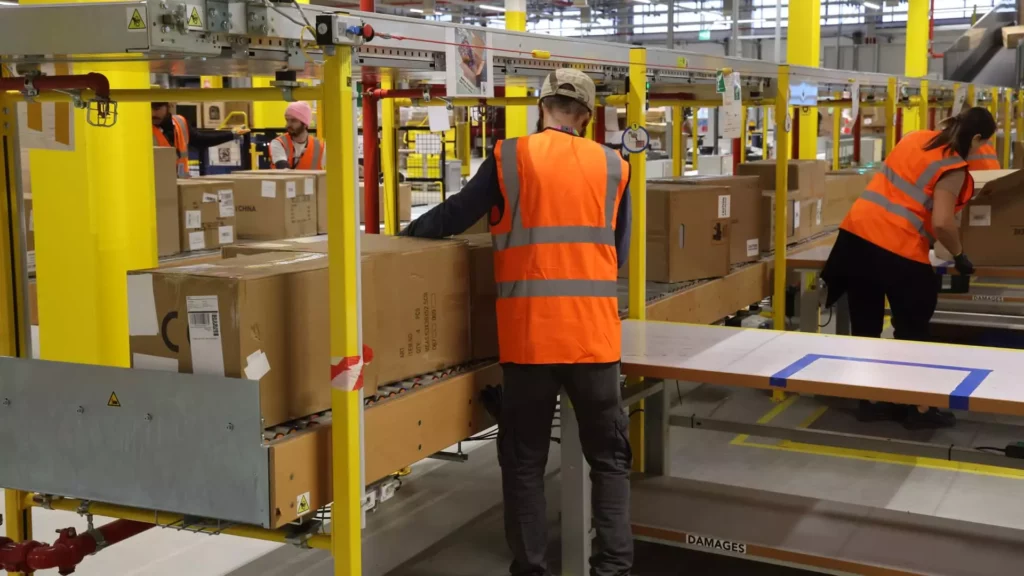In recent years, technological innovation—particularly automation—has been heralded as the pinnacle of modern industry, with companies like Amazon leading the charge. Their deployment of over a million robots and integration of sophisticated AI systems is presented as a transformative achievement, promising unparalleled efficiency and competitiveness. Yet beneath this shiny veneer lies a troubling reality: the narrative of progress often disguises a reckless abandonment of human workers, especially those in middle- and low-skilled positions. While automation undeniably boosts logistical efficiency, it simultaneously erodes the very foundation of stable employment, long seen as a cornerstone of economic security within the middle class.
What is often overlooked is that technological advancements, in their relentless drive for cost-cutting, tend to prioritize shareholder profits over worker well-being. Amazon’s strategic deployment of robots, coupled with an AI-driven “DeepFleet” model, signifies not just a modernization project but an ideological shift—one that reduces human labor to ancillary tasks and elevates machines to dominant industry agents. This transformation reflects an unwavering belief in the supremacy of automation, yet it also reveals a shortsighted disregard for the social fabric that supports a balanced economy. The promise of creating new roles for displaced workers—upskilling, technical maintenance, supervisory positions—is often more aspirational than achievable, especially given the stark reality that most warehouse employees lack the necessary education and resources to transition seamlessly into high-tech roles.
The Human Toll in the Age of Robots
While corporate spokespersons insist that robotic systems are designed to complement human efforts rather than replace them, the pragmatic outcomes suggest otherwise. The scale of layoffs, especially the 27,000 jobs lost in recent years, underpins an undeniable trend: automation is a catalyst for employment decline and economic insecurity. The narrative of “opportunity through innovation” sounds promising, but it is frequently a sanitized version that sidesteps the human suffering inflicted by mass displacement.
The reality is that for many workers, their jobs are not reformed but eradicated. Behavior and skills that once defined middle-class stability—manual handling, routine logistics, repetitive tasks—are systematically phased out, replaced by machinery that operates faster, cheaper, and more consistently. The light at the end of the tunnel—that staff will leverage retraining programs—remains a faint glimmer, as the skill gaps widen and access to upgrading opportunities remains scarce for the average worker. The optimism about societal benefits assumes a level of technological literacy and resource availability that simply does not exist for a significant portion of the labor force.
The Ethical Dilemma of Unchecked Automation
The ethical implications of Amazon’s automation push are profound and troubling. Leaders promote the idea that robots are pathways to lighter work for human employees, but the underlying truth reveals a different picture: corporations are prioritizing profit margins at the expense of their workforce. In doing so, they foster a climate where jobs are viewed more as costs than as vital components of a community’s economic stability.
This raises an uncomfortable question: when does innovation cross the threshold from beneficial progress to outright exploitation? The ongoing layoffs, combined with the marginal growth in technical and engineering roles, suggest that the supposed gains are a smokescreen hiding a process of human obsolescence. Economic analyses underscore this point: automation’s proliferating footprint correlates with stagnant wages, rising inequality, and a shrinking middle class. The narrative that technological growth will create a more equitable economy is at best overly optimistic. Without deliberate, targeted policies designed to regulate the pace and impact of automation, society risks exacerbating divisions and prolonging hardship for millions who are already vulnerable.
The Political and Social Reckoning
From a pragmatic standpoint, the push toward automation must be balanced with a sober recognition of its societal costs. Governments and policymakers, especially those with a center-right perspective, should advocate for a cautious approach—one that values technological innovation but not at the expense of social cohesion. Incentives should be aligned to promote workforce retraining, but these initiatives must come with realistic expectations and tangible support structures.
The essence of responsible capitalism is recognizing that long-term economic health depends on an engaged, secure workforce. Neglecting this fact in pursuit of short-term efficiencies ultimately undermines both social stability and economic resilience. A balanced approach involves encouraging technological progress while implementing safeguards—such as wage stabilization, universal basic income, or robust retraining programs—that cushion the fallout from displacement.
Ultimately, the ongoing automation revolution presents a stark choice: embrace the promise of technological advancement with a commitment to human dignity or capitulate to a future where progress is measured solely by machines and profits, leaving millions behind in the process. As we witness giants like Amazon automate with abandon, the question is not merely about technological capability but about societal responsibility. The path forward requires a hard, honest look at the true cost of progress and the moral duty to ensure that innovation uplifts the many, not just the few.









Leave a Reply